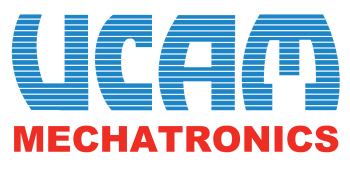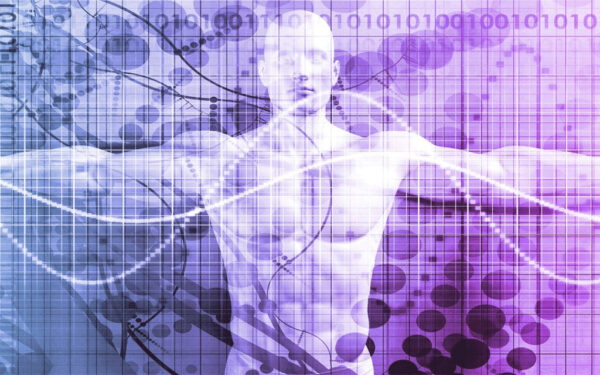Organizational and product innovation to reposition and continue to grow. With the help of advanced, fast and super precise machinery. Thus the sector will be able to withstand the challenges of post Covid.
Medical devices is one of the sectors that in Italy has always enjoyed good health and that has also been able to keep up with the pandemic. The numbers confirm this.
According to the latest data made available by Confindustria , in fact, the 3,957 companies in the sector with their 76,400 employees generate around 16.5 billion euros in turnover.
“The medical sector has also stood up to the pandemic,” she reiterated David Fusari , country manager for Italy of R + W .
Many of our client companies build, in fact, machines for pharmaceuticals and for packaging or non-woven fabric and some of them during the lock-down have taken orders for the production of overalls and clothing for paramedics or for health masks, thus remaining always active.
A heterogeneous, highly innovative and specialized industrial fabric, where small companies coexist with large groups.
A feature that unites all operators is the constant innovation of the products.
An effort appreciated by the market so much that the export of the production of medical machinery for 8 years has recorded consecutive growth rates reaching a decided + 4.7% which, translated into money, means over five billion euros.
The main markets are the United States, France and Germany. In increase of 3.4% also imports mainly to Germany, Holland and Belgium.
The constant research that characterizes the sector has also given a decisive boost to the birth of start-ups, which have reached 334, 40% of which are innovative .
Of these, one in two was born as a spin-off of public research and the area that is experiencing the greatest growth is that of digital health (31%). Segment, the latter, which includes all the new products and services for personal care completely digitized and which, according to a research by Roland Berger carried out involving 400 international experts, in 2025 will reach an 8% market share with an economic value estimated at 155 billion euros.
Three challenges to resist the evolution of the markets
But in order to continue to cope with the evolution of the markets, companies in the medical sector will inevitably have to face a great test in the coming years: repositioning themselves and avoiding the transformation of products into commodities .
This is why most of them will have to rethink their business model and value chain.
In this context, smart devices capable of integrating intelligence elements and supporting prevention strategies, as well as treatment, at sustainable costs will be increasingly important .
To say this is the study Medical devices 2030. Making a power play to avoid the commodity trap, drawn up by the consulting firm Kpmg for which there will be three great challenges that medical companies will have to face: reinventing, repositioning and reconfiguring the value proposition .
The first is related to the need to rethink the business model to adapt it to the evolution of technologies.
The integration of artificial intelligence systems is at the heart of interconnected healthcare models capable of providing services that go beyond the simple device, thus allowing “changing the paradigm from the need to manage a cost (that of the device) to the possibility of create a smart value that can be spent on parallel branches built on the basis of market segmentation in customers, patients and consumers (the latter possible prospective patients) “.
Not only organizational but also product innovation.
The latter obviously involves the use of increasingly advanced machinery capable of producing in a precise and fast way.
“The medical sector is a sector that requires fast machinery with sustained hourly production, which must be guaranteed at least two years of high production life”, Fusari specified , “Particularly suitable for this type of machinery are our R + W couplings from EK series with precision elastomer and ES2 series , again with precision elastomer, with built-in torque limiter, a safety device capable of stopping the machine in the event of overload problems, thus avoiding costly downtime ».
3D printing is the protagonist of the sector
Furthermore, in the constant search for speed and precision, 3D printing will give a great hand to companies in the sector , especially in the field of prototyping, thus offering the opportunity to experiment, improve the prototype by customizing it and reducing time and costs compared to traditional production methods. .
It is no coincidence that the world market is growing rapidly. According to experts, in fact, in the medical field it is estimated that by 2023 25% of medical devices in developed markets will be printed with additive technologies .
The 3D printing of metals and polymers is suitable, in fact, for various uses in the medical field, ranging from the production of the prosthesis to the creation of detailed models of parts of the human body in order to allow the surgeon to plan in advance an operation; from the creation of tools and ad hoc tools for many types of operations to custom-built titanium plates to replace damaged bones.
Today orthopedics and dentistry are the segments that most frequently make use of additive technologies .
ASST Gaetano Pini-CTO of Milan gave testimony of the validity of these solutions on the occasion of the two Milanese Days of Knee Surgery held in May last year.
Of the two live interventions hosted by the event, one concerned the implantation of a titanium prosthesis made to measure for the patient thanks to a three-dimensional printer, performed for the first time in Italy.
The structure was the absolute pioneer in our country in starting the experimentation of this type of customized prosthesis, produced in North America.
“In Europe”, said Professor Pietro Simone Randelli, director of the 1st Orthopedic Clinic of the Gaetano Pini hospital and full professor of Orthopedics and Traumatology at the University of Milan , “only in Germany and in the United Kingdom, there are specialized in this regard.
The prostheses we implant are made to measure, in titanium alloy, by a North American company, after a careful study of the patient’s examinations – such as the CT scan – by our specialists.
In addition to the prosthesis, the tools used for the implant are also created with the 3D printer.
At the moment it is possible to build about 30 plants per year ».
Tv2000 also dealt with the operation successfully completed by Randelli in the report that appeared in the context of the program My doctor available here.


